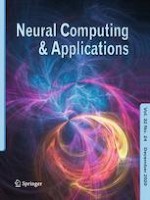18.02.2019 | WSOM 2017
An energy-based SOM model not requiring periodic boundary conditions
Erschienen in: Neural Computing and Applications | Ausgabe 24/2020
EinloggenAktivieren Sie unsere intelligente Suche, um passende Fachinhalte oder Patente zu finden.
Wählen Sie Textabschnitte aus um mit Künstlicher Intelligenz passenden Patente zu finden. powered by
Markieren Sie Textabschnitte, um KI-gestützt weitere passende Inhalte zu finden. powered by
